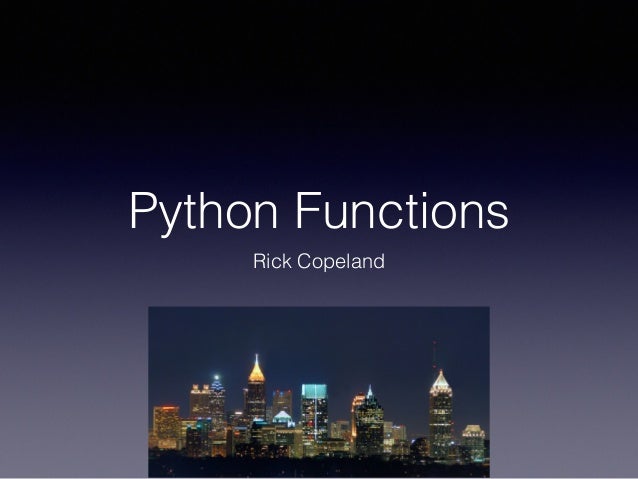
- 快速生成字典
In [1]: a =["a","b","c","d","e","f"]
In [2]: b = {a[i]:i for i in range(len(a))}
In [3]: b
Out[3]: {'a': 0, 'b': 1, 'c': 2, 'd': 3, 'e': 4, 'f': 5}- 简洁条件判断
In [4]: j = [x for x in range(10)]
In [5]: results = []
...: for i in j:
...: result = 2<=i<6
...: results.append(result)
...:
In [6]: results
Out[6]: [False, False, True, True, True, True, False, False, False, False]- 快速生成随机测试数据框数据集
In [7]: import pandas as pd
...: import random
...: df = pd.DataFrame(
...: {"class":[random.choice(a) for x in range(10)],
...: "scores":[random.randrange(100) for x in range(10)],
...: "random_sex":["boy" if random.randrange(10) > 5 else "girl" for x in range(10)]
...: })
In [7]: df
Out[7]:
class random_sex scores
0 f boy 70
1 a girl 56
2 f boy 69
3 e boy 8
4 b girl 86
5 c girl 63
6 a girl 0
7 a girl 81
8 d boy 77
9 f boy 48
In [9]: - lamba表达式+布尔值,DataFrame快速筛选
In [9]: f = lambda x:60<x<70
In [10]: df[df.scores.map(f)]
Out[10]:
class random_sex scores
2 f boy 69
5 c girl 63- 补充上面布尔式子
In [11]: j = [x for x in range(10)]
...:
...: results = []
...: for i in j:
...: result = 2<=i<6
...: results.append(result)
...:
In [12]: results
Out[12]: [False, False, True, True, True, True, False, False, False, False]- 下划线”_”检查最后输出
In [14]: _
Out[14]: [False, False, True, True, True, True, False, False, False, False]- 反向迭代
In [15]: a[::-1]
Out[15]: ['f', 'e', 'd', 'c', 'b', 'a']- zip,namespace
1、二元结构生成(见test)
2、字典的map(见test0)
3、类似展开(见test1)
4、同上(test2)
import itertools
t1 = ("a", "b", "c")
t2 = (10, 20, 30)
test =list(zip(t1,t2))
test0 =dict(zip(t1,t2))
test1 = list(itertools.chain.from_iterable(test0))
test2 = list(itertools.chain.from_iterable(test))
def namestr(obj, namespace):
return [name for name in namespace if namespace[name] is obj]
for i in [test,test0,test1,test2]:
print(namestr(i, globals())," =>:",i)OUTPUT
['i', 'test'] =>: [('a', 10), ('b', 20), ('c', 30)]
['test0', 'i'] =>: {'b': 20, 'a': 10, 'c': 30}
['test1', 'i'] =>: ['b', 'a', 'c']
['test2', 'i'] =>: ['a', 10, 'b', 20, 'c', 30]- 递归-字符去重(仅连续字符有效)
def remvoedup(word):
if len(word)<=1:
return word
elif word[0]==word[1]:
return remvoedup(word[1:])
else:
return word[0]+remvoedup(word[1:])OUPUT
In [19]: remvoedup("aaaaaaabbccdef")
Out[19]: 'abcdef'- 时间转日期?哪个简洁
code1
import datetime
import re
def textTOtime(text):
##use re
listtext =re.findall("..",text[4:])
##also can use generator expresstion
# listtext =[text[0:4]]+[text[i:i+2] for i in range(4, len(text),2)]
inder = ["-","-"," ",":",":"]
timeformat =text[0:4]
for i in range(5):
timeformat+=inder[i]+listtext[i]
return datetime.datetime.strptime(timeformat,"%Y-%m-%d %H:%M:%S")code2
##improve--sometext[:4]+"".join(i+j for i,j in zip(indicator,re.findall("..",sometext[4:])) )
def imptextTOtime(text):
inder = ["","-","-"," ",":",":",""]
timeformat ="".join(i+j for i,j in zip( re.findall("..",text),inder) )
return datetime.datetime.strptime(timeformat,"%Y-%m-%d %H:%M:%S")output
In [50]: textTOtime(sometext)
Out[50]: datetime.datetime(2016, 9, 24, 7, 4, 22)
In [51]: imptextTOtime(sometext)
Out[51]: datetime.datetime(2016, 9, 24, 7, 4, 22)- greadtools 代码调试工具
import pdb
pdb.set_trace()
def addup(a,b):
c = a+b
c=c+d
return c
addup(1, 2)上面这段蹩脚的代码,进入ipython跑之后。。。下面的s,n,q分别是进入pdb调试阶段后的”进入函数”,”跑下一行代码”,”退出”
PS D:\CODES\ProjectCT\Kaggle\handyfuncs> ipython.exe .\test.p
> d:\codes\projectct\kaggle\handyfuncs\test.py(4)<module>()
-> def addup(a,b):
(Pdb) s
> d:\codes\projectct\kaggle\handyfuncs\test.py(8)<module>()
-> addup(1, 2)
(Pdb) s
--Call--
> d:\codes\projectct\kaggle\handyfuncs\test.py(4)addup()
-> def addup(a,b):
(Pdb) n
> d:\codes\projectct\kaggle\handyfuncs\test.py(5)addup()
-> c = a+b
(Pdb) n
> d:\codes\projectct\kaggle\handyfuncs\test.py(6)addup()
-> c=c+d
(Pdb) n
NameError: name 'd' is not defined
> d:\codes\projectct\kaggle\handyfuncs\test.py(6)addup()
-> c=c+d
(Pdb) q




















 1万+
1万+











 被折叠的 条评论
为什么被折叠?
被折叠的 条评论
为什么被折叠?








